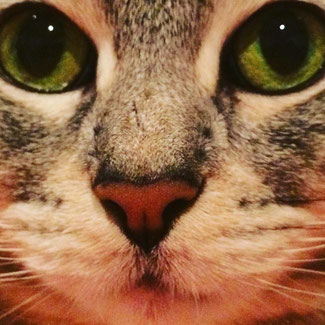
As a species, domesticated cats are extremely successful. With the exception of Antartica, they they have clawed their way into the hearts and homes of humans on every continent. They appear in ancient Egyptian artworks, and they even have their own YouTube channels and Instagram accounts. But where did they come from, how did they spread, and just how long have humans and cats been an item? Researchers from the University of Leuven in Belgium and the Institut Jacques Monod in France have teamed up to answer those questions using ancient DNA from archaeologically recovered cat remains.
According to the research team, there are five species of wildcat in the “Old World,” and only one, Felis silvestris lybica from north Africa/southwest Asia, was ever domesticated. Therefore the team took DNA samples from ancient and modern cats, spanning a time frame of 9,000 years ago to the present, and using Felis silvestris lybica genes as a marker, found two domestic cat geneses.
The first genesis came during the Neolithic in the Near East, where the domestic cat began to move around. The second and more potent genesis came during the Classical period in Egypt when the Egyptian cat infiltrated all of the Old World. The research team says the spread, caused by humans actively moving cats around, followed trade routes over seas and over land as the felines proved useful on ships and in villages as a means of pest control.
Researchers also found coat color variations, specifically the “blotched tabby marking” didn’t occur until the Middle Ages, meaning humans didn’t actively manipulate cat breeding until that point. Leaving cats free to interbreed with their wild counterparts, the group says, is likely why cat morphology and general behavior hasn’t changed much over the past few thousand years as opposed to dogs with their vast physical and temperamental variations.
The group’s research was published in Nature Ecology & Evolution and can be found here.



